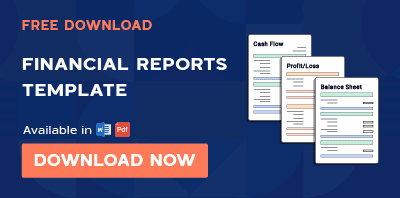Getting that Paycheck Protection Program (PPP) loan is a relief…for about five minutes. Then the questions start:
How do I use it? What counts? Can I mess this up?
These aren’t overreactions. This is the part where things often go sideways—not because people don’t care but because the rules are vague, and no one gives straight answers.
You’re expected to use the funds “correctly,” but no one clearly defines what that means.
In my experience, most mistakes happen because people try to do the right thing without concrete information.
You don’t have to be perfect. You have to be deliberate. If you’re assuming the worst is behind you now that you have the funds, I hate to break it to you, it’s not and this stage is very important.
Don’t rush to spend if you’re unsure what to do after receiving a PPP loan. I’ve seen people misuse the funds by accident and end up with surprise debt.
Here’s what I focus on before touching a cent.
1) Learn the terms
When you get the PPP loan, you would want to fully understand its terms. Here’s a breakdown of the PPP loan terms and forgiveness conditions:
- Loan amount: Usually 2.5x the average monthly payroll. For businesses in hospitality or restaurants, the second draw could be 3.5x.
- Rate & term: The interest rate is surprisingly friendly and is only 1%, and you have 5 years to pay back anything not forgiven. Plus, no collateral or personal guarantee is required.
- Forgiveness criteria: To get full forgiveness, you must spend at least 60% on payroll (makes sense—it’s meant to protect paychecks) and not significantly cut staff or wages.
- Forgiveness process: You have to submit a forgiveness application with paperwork (payroll reports, receipts, etc.). If your loan is under $150K, you can simply use a simple one-page form.
2) Refresh your profit and cash flow forecasts
You might think that after getting a PPP loan, I’d relax. Nope. Go straight into updating your financial projections (profit and loss and cash flow) through the end of the year.
You would want to know exactly how far that money takes your business. Even though pandemic chaos has subsided, the economy is still full of surprises (Have you seen prices lately? It’s all in flux.)
Update your profit and loss and cash flow projections to get a clear plan for how to put the PPP funds to work. You will see that using the loan for payroll and rent extends your cash runway and meets the forgiveness criteria.
Plus, these forecasts double as backup documentation when it’s time to apply for forgiveness. The projections also show that even with the PPP money, you’ll need to seek additional funding.
This isn’t a one-and-done task—you’ve to keep adjusting the forecast as conditions change.
3) Spend the money on what the SBA actually allows
PPP stands for Paycheck Protection Program, but I tell myself it also means “Pay People Primarily.” It’s my way of remembering the 60/40 rule: You need to spend at least 60% of the loan on payroll to get full forgiveness.
That meant:
- Payroll first (60%): Use at least 60% of the loan for paychecks, including your employees’ wages and benefits (and even your own salary).
- Essential bills (40%): Spend the rest (up to 40%) on other forgivable expenses: your office rent, utility bills, and similar costs.
Sticking to this 60/40 split gives you peace of mind (and lets you sleep at night), knowing you will qualify for full forgiveness. For more on the rules, I recommend checking on the SBA’s PPP loan forgiveness guidance.
4) Figure out how far your PPP loan really goes
Forecasting isn’t exactly my (or anyone’s) usual idea of fun—but running out of cash? Definitely worse. So sit down and build a few realistic scenarios: One where sales pick up, one where they flatline, and one that’s just plain ugly.
See how far the PPP loan would take you in each case. (Spoiler: not as far as you hope.) Don’t panic, but make a plan. When you see a shortfall in one of your forecasts, look at options—Emergency Injury Disaster Loans, talking to vendors about payment terms, and checking out local aid programs.
You don’t need to build everything from scratch. You can always use Upmetrics to test out different scenarios, trace how you are using the PPP funds, and sync everything with QuickBooks. If you spot the gap earlier, you will have more time to fix it.
5) Get your documents in order
No one is usually a fan of paperwork, but for your PPP loan, make an exception and document absolutely everything. To make sure you’re ready for forgiveness, I suggest you keep things simple but thorough:
- Set up a dedicated bank account for PPP funds to keep them separate from the main business activity.
- Then use a spreadsheet or a financial forecasting tool to track every payment—payroll, rent, utilities—you name it.
- Receipts, payroll slips, and anything relevant go into one easy-to-find folder.
It turns out this level of organization is exactly what lenders (and the SBA) want to see for forgiveness. The official SBA page backs me up on that. My friend’s lender asked for slightly different documents than mine, so being thorough just made sense.
Ultimately, I know solid documentation is key for full forgiveness. Forgiveness is the goal, and clean records are how you can plan to get there.
6) Applying for loan forgiveness
When the PPP-covered period ends, you must get on top of the forgiveness process. You technically have up to 10 months before payments kick in, but I would strongly recommend against waiting around.
Here’s what you can do:
- First, call your lender and ask for the right form. If your loan is under $150K, they will give you Form 3508S. (super short, thankfully).
- Then gather up all the proof: payroll tax forms (Form 941), bank records, utility bills, rent payments, and state wage filings.
Submit everything and keep checking in until you hear back from them. You will end up getting it fully approved. However, if it goes south, be ready to ask the SBA to review it. Honestly, the key was staying organized, being proactive, and not ghosting the lender.
If you’re still figuring it out…
You’re not the only one. I’ve talked to plenty of business owners who felt confident about getting the PPP loan but weren’t totally sure what came next.
What kept them on track (and out of trouble) was using Upmetrics. It’s not just for forecasting or tracking expenses—it helps business owners make smarter decisions in real time: How much I could actually afford to spend, which expenses were forgivable, and when I needed to adjust.
When it’s time to apply for forgiveness, everything is already organized. If you’re managing PPP funds and want to avoid second-guessing every step, this is the tool I recommend. It saves time, reduces stress, and keeps your business moving forward.


